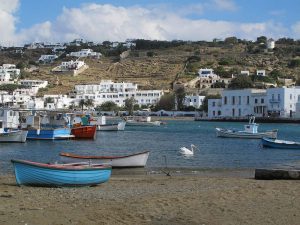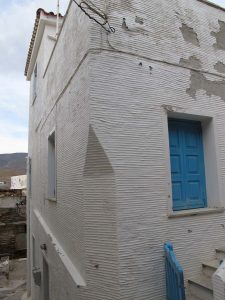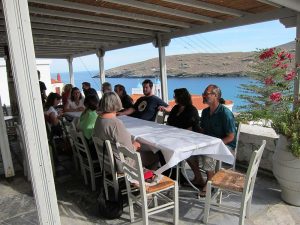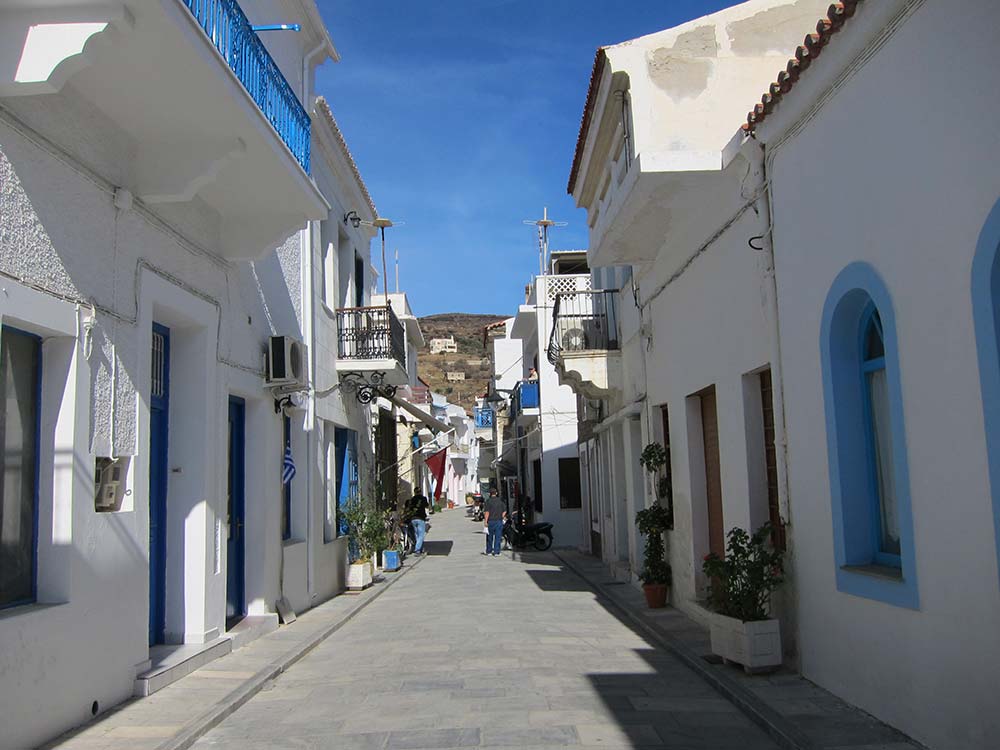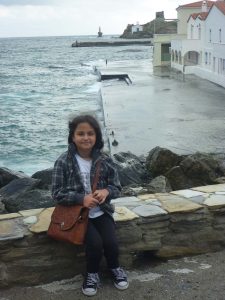by Irma Havlicek
Powerhouse Museum Online Producer
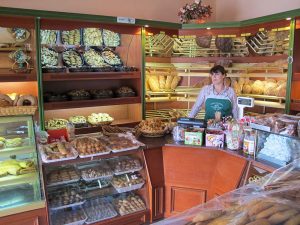
Quite early on in our stay in Batsi, we started sussing out the food options nearby – both for dinner on Saturday nights and breakfast and lunch on Sundays (the Kantouni Pensione/Cafe prepares our other meals) and also to buy treats to bring back to the pensione for snacks after a hard day in the field.
One of our early discoveries was the Tountas Bakery, and we haven’t looked back. Their spanakopita (cheese and spinach pie) has become particularly popular with our team.
I took the following photos to give you an idea of the kinds of things the bakery offers.
